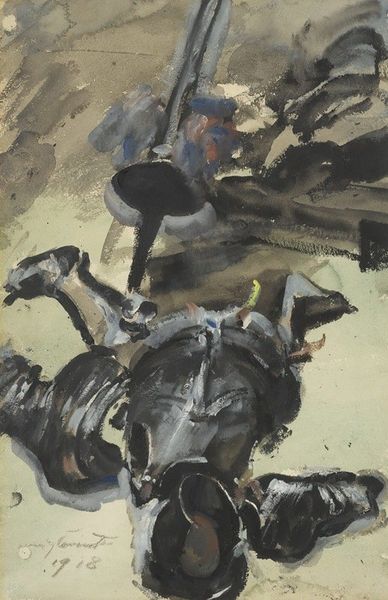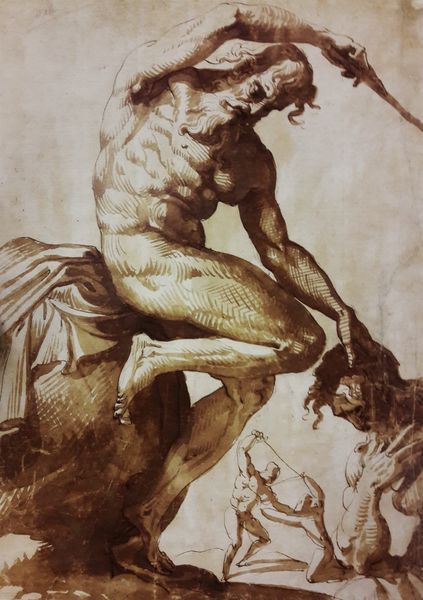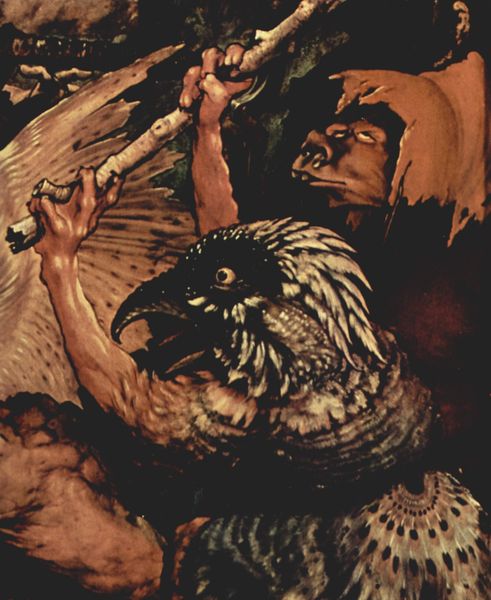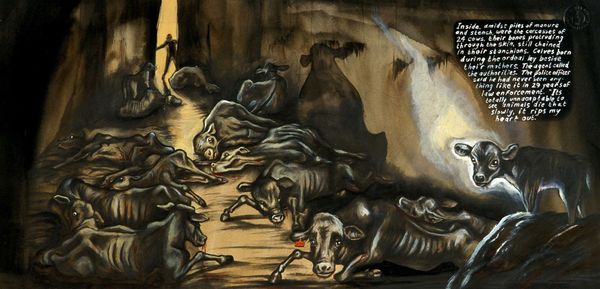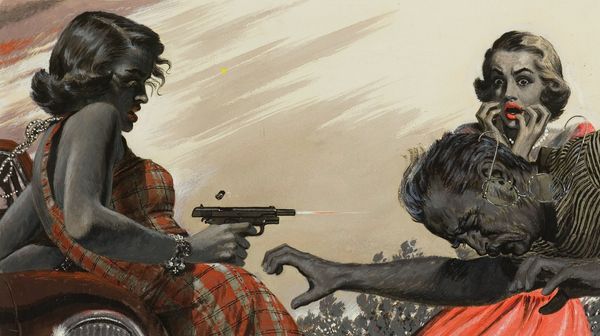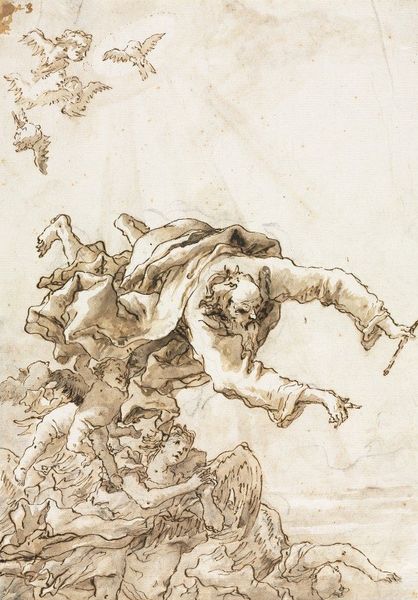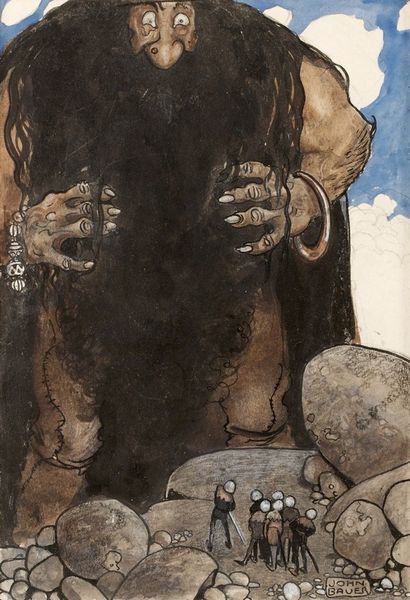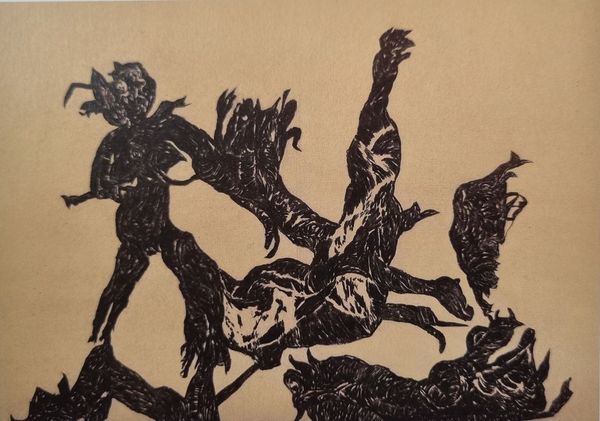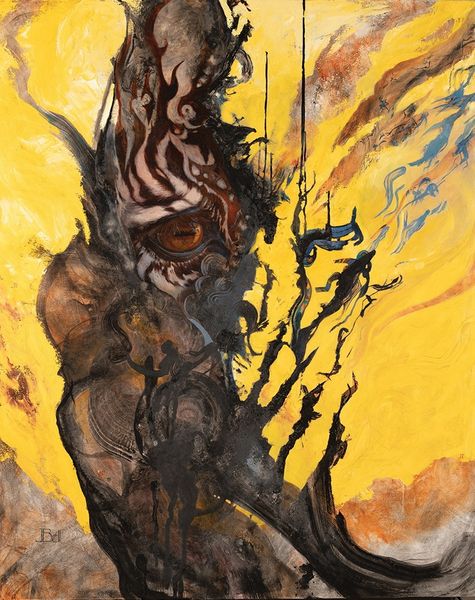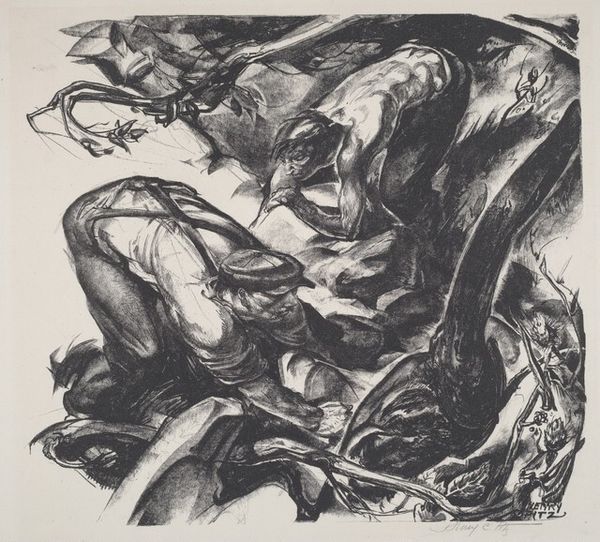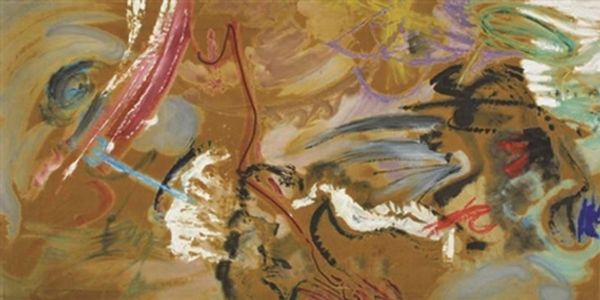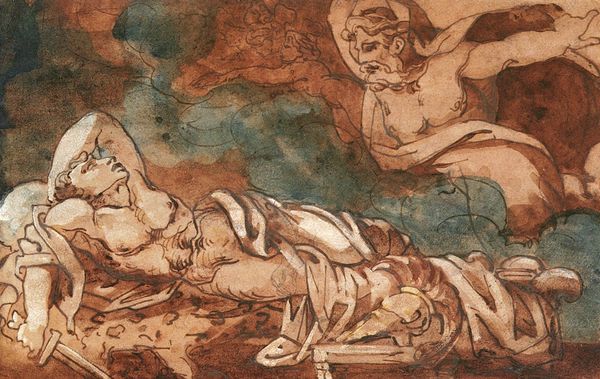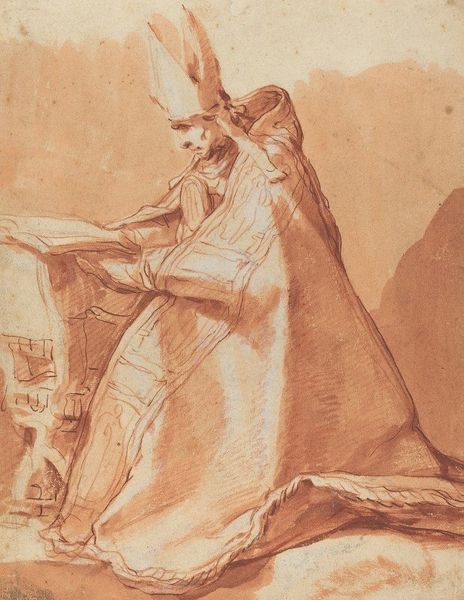
drawing, watercolor, ink
#
drawing
#
narrative-art
#
fantasy art
#
pen sketch
#
fantasy-art
#
figuration
#
watercolor
#
ink
#
pen-ink sketch
#
symbolism
Copyright: Public Domain: Artvee
Editor: Here we have Arthur Rackham's 1901 ink and watercolor drawing, Loki and Sigyn. The mood is heavy, somber, given the anguished figure bound in chains beneath a serpent. The stark contrasts, the sharp, sinuous lines…it’s quite arresting. What is your reading of this piece, seen purely through the lens of form? Curator: Focusing on the formal aspects, observe how Rackham masterfully uses line to create a sense of claustrophobia and tension. The dense, interwoven lines of the serpent and the chains visually bind Loki, mirroring his physical constraint. Do you notice the contrast in textures? Editor: Yes, the rough texture of the rocks against the smoother skin tones... It emphasizes the harshness of Loki's confinement, right? Curator: Precisely. Furthermore, the limited color palette, primarily earth tones, contributes to the overall feeling of oppression. Consider the dynamic interplay between light and shadow. The highlighted areas draw our eye to key emotional elements – Sigyn's determined expression, Loki's suffering. Editor: So, Rackham guides our eye to these emotional focal points through pure manipulation of light and form. The very composition dictates the narrative. It’s a fascinating thought. Curator: Indeed. Consider too how the vertical composition accentuates the unending torment. Even the lilies, placed at the lower left, add another layer of contrasting lightness versus heavy darkness. Editor: I hadn't considered the impact of verticality itself. It creates a sense of inescapable doom hanging over the subjects. Curator: Correct. In essence, the formal elements in "Loki and Sigyn" function as a powerful language, communicating emotional distress and narrative constraint through visual means alone. It’s a testament to the inherent expressiveness of artistic form. Editor: This has broadened my perspective on how compositional decisions can inform and deepen narrative! It's definitely a different way to engage with the piece. Curator: Agreed, and form's ability to shape how we feel as the viewers can lead us to further discussions.
Comments
No comments
Be the first to comment and join the conversation on the ultimate creative platform.
